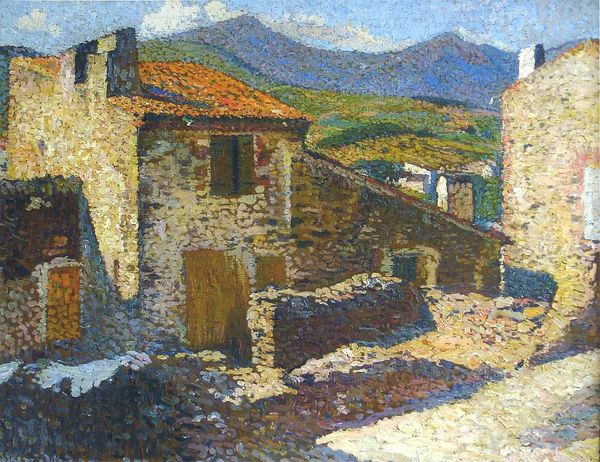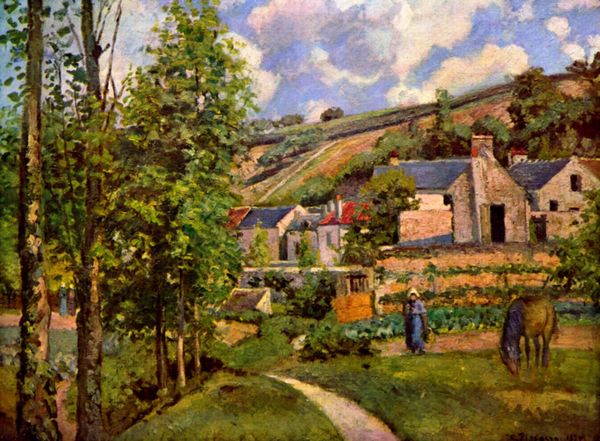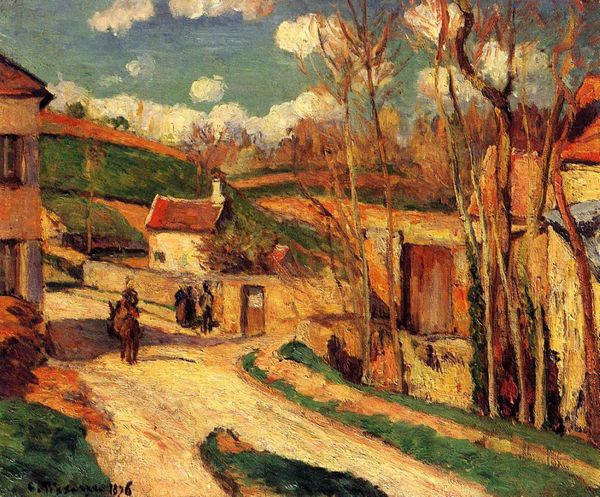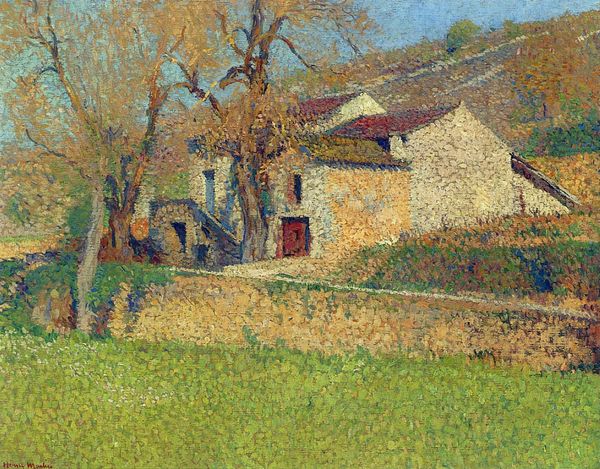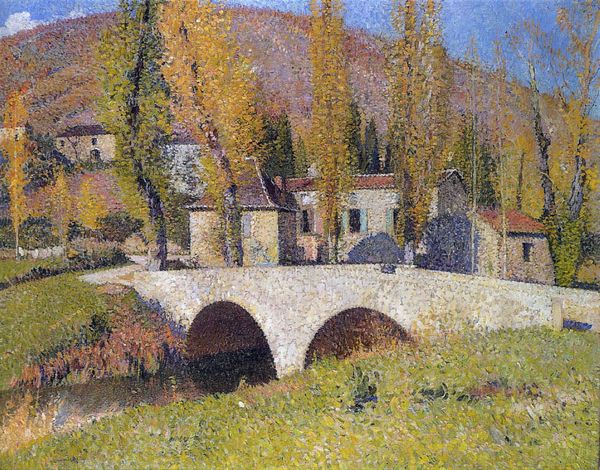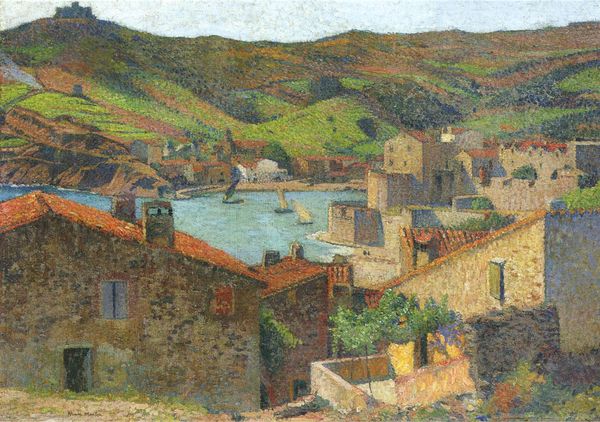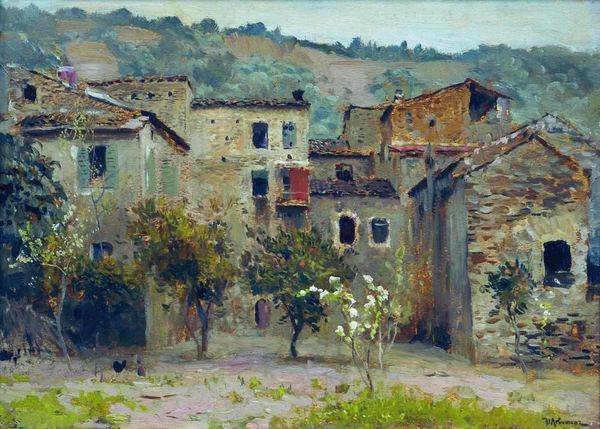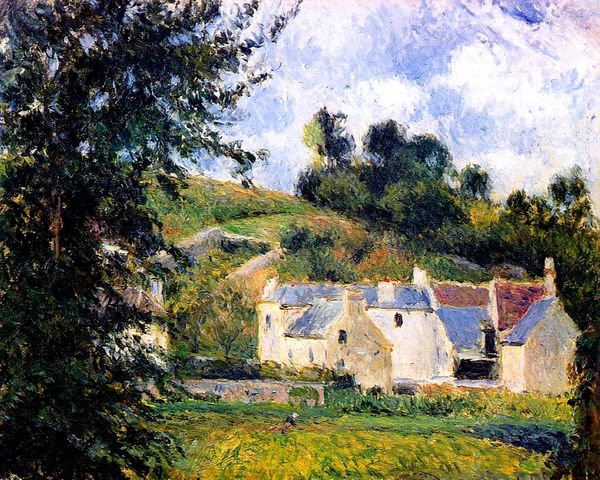
Copyright: Public domain
Editor: This is Willard Metcalf's "Old Mill, Pelago, Italy," painted in 1913 with oil on canvas. The houses cascading down the hillside make me think of community and resilience. How do you interpret this work? Curator: This painting offers us a window into a moment in time, but also into the evolving ideas of community and landscape in the early 20th century. It’s an Impressionist work, yet the figures are quite grounded. Where do we situate that in broader narratives of migration and the romanticizing, and potential erasure, of rural communities? Editor: I hadn't thought about the figures in relation to migration. Curator: Consider the visual language: the way the houses cluster together, the pathway leading our eye through the composition, yet leading… where? Does it celebrate community, or idealize it? It was made during a time of massive movement and social change. How does the painting engage, or perhaps disengage, with those realities? Editor: It’s interesting to consider what's absent. Are we perhaps seeing a carefully constructed idyllic scene, consciously omitting signs of hardship? Curator: Exactly! And who is this "idyll" for? Is it a commentary on social realities, or an escape from them? These tensions make the artwork much richer, don't they? Considering how such depictions might contribute to or challenge stereotypes of rural life becomes vital. Editor: Definitely. Looking at it now, the painting feels more complex. Thanks! Curator: It's about pushing beyond initial impressions, seeing how art can reflect, and also shape, our understanding of history and society.
Comments
No comments
Be the first to comment and join the conversation on the ultimate creative platform.


